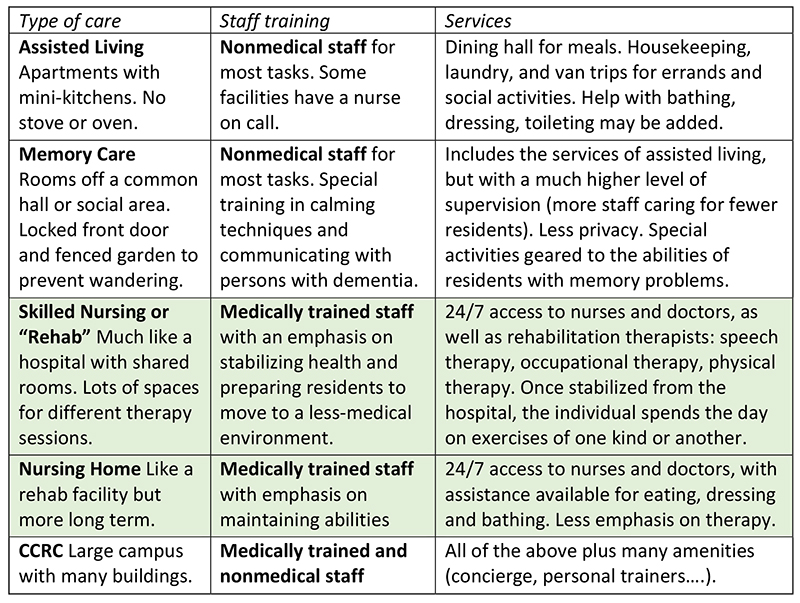
While “aging in place” has its benefits, it is expensive to get such individualized care. Plus, it’s rather isolating. Group options require a move, but are more social and cost effective.
Assisted living. People move to assisted living when they are ready to stop cooking, cleaning, and maybe even driving. They enjoy social activities but need more help than an independent retirement community might offer. Though not a setting for people with advanced dementia, a portion of assisted living residents may have memory problems.
Memory care. With activities specifically for people with significant dementia, memory care may be housed in a wing of assisted living or operate as an independent facility.
Skilled nursing or “rehab.” Geared for short stays—several days to several weeks—a skilled nursing facility can be thought of as a place to get stronger or learn to do things in new ways after a setback. Then you move to a more homelike environment.
Nursing home. This setting is a long-term version of rehab but for those with complex conditions who don’t need a hospital, yet aren’t independent enough for assisted living.
Continuing care retirement community (CCRC). This large “campus” offers all of the above and more. Move in while fully independent and able to enjoy the pool, golf course, etc. As care needs change, residents move to the different care buildings yet stay on the same property. Ideal for a couple when one needs more support than the other.

